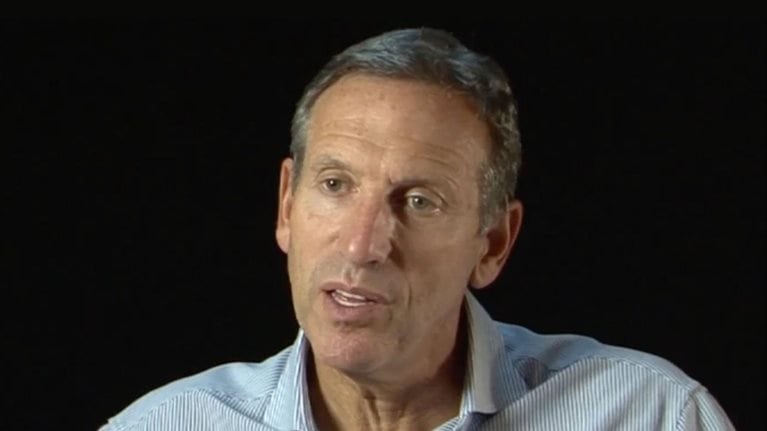The need to build “second home markets” in fast-growing emerging economies is high on the minds of many CEOs. But few have come as far, and know as much about the challenges, as Zeinal Bava, the chief executive of Portugal Telecom (PT). Bava, 45, an investment banker before joining PT in 1999, and his management team set ambitious goals in early 2008: to raise the international share of PT’s revenues to 66 percent by year-end 2011, from 45 percent in 2007, and almost to double the customer base, to 100 million.
Bava was elected CEO in 2008, after PT finally thwarted a hostile-takeover bid by Sonaecom, a Portuguese competitor. Then, having turned around the performance of PT’s domestic and Brazilian operations, the management team faced another major challenge in 2010, when Telefónica acquired PT’s half of Brazil’s top mobile operator, Vivo. This left PT without its growth engine, which was contributing almost half of the company’s total revenues. Determined to revive the Brazil strategy, PT spent about half of the €7.5 billion proceeds from the sale of Vivo to buy a 25 percent stake in Brazil’s largest telecom company, Oi, thus starting anew with a similar level of exposure to the country.
In this interview, conducted at Portugal Telecom headquarters, in Lisbon, Bava talked with Jürgen Meffert, a director in McKinsey’s Düsseldorf office. They discussed the imperative of international expansion, what it will take to succeed in Brazil with Oi, and how a pay-TV offer helped transform PT’s domestic operations after the—as Bava describes it—“near-death” experience of the hostile-takeover bid.
The Quarterly: What are the drivers of Portugal Telecom’s international growth?
Zeinal Bava: The liberalization of the Portuguese telecom market, in the mid-’90s, ended PT’s monopoly, with inevitable losses of market share. Growth and scale are essential for competitiveness in this sector, which has high fixed costs. PT made some investments in Africa and Brazil and prioritized Brazil in the late 1990s because it has a large and growing population that shares our language and culture. The downside was perceived currency volatility and uneven distribution of wealth. The addressable market was mostly atop the income pyramid. In 1998, PT acquired a controlling stake in Telesp Celular, the leading wireless operator in populous São Paulo state, which represents a major share of Brazil’s economy. In 2001, believing that Brazil was moving toward a structure of national rather than regional operators, we joined forces with Telefónica’s complementary wireless investments—a strategic partnership that culminated in the launch of Vivo, in 2003.
The Quarterly: How did you approach the growth challenges when you became CEO, in 2008?
Zeinal Bava: The Portuguese telecom market is mature. Given that our number of lines per employee and our margins are already among the best in the sector, top-line growth will be increasingly critical for underpinning earnings and for cash flow growth. In addition, international growth provides diversification that allows us to reduce financial and operational risk. Our investors like that. When you consider the situation for Iberian sovereign risk today, we can rightly point out that PT is a company with half of its business outside Portugal. Moreover, we offer exposure to Brazil, the most important emerging economy after China and India. Access to talent is another point. Top students are attracted to us because they like what we’re doing with innovation and increasingly see us as a multinational that can offer an exciting international career.
So we continued to push for growth and concentrated on Brazil—with less focus on building footprint and more on collaboration with our partner, Telefónica, to extract synergies and create and maximize shareholder value. Both companies invested a lot of management and engineering capabilities in turning around Vivo. Following the recent Vivo and Oi transactions, we’ve crystallized value and got ourselves back into the growth cycle of the sector while maintaining scale and exposure to Brazil. In 2007, our share of Vivo was valued by the market at circa €3 billion. Telefónica bought it in 2010 for €7.5 billion after raising the offer several times.
The Quarterly: What was the rationale for switching from a mobile operator like Vivo to Oi, which is much larger in fixed line than in mobile?
Zeinal Bava: Compared with Vivo, we see superior synergies in the partnership with Oi. It’s an integrated operator—fixed and mobile, just like us—and we believe the telecom market in Brazil is moving toward integrated voice, video, and data services. In Portugal, we are the leader in mobile. In Brazil, Oi is number four, with potential to grow its share. The challenges that Oi is facing, and the transformation required, is not very different from the one PT has gone through. In 2007, we were losing 100,000 fixed telephone lines every quarter. Similarly, Oi lost over 300,000 lines in the last quarter. We addressed the imbalances in our business in Portugal by offering pay-TV and investing in the network. Nowadays, when you go to any of our stores, you’ll be approached by one of our sales assistants, who will ask if you would like to buy a triple-play bundle for a flat fee. So we have capabilities and experiences we can share and that will benefit both Oi and PT.
The Quarterly: How will you transfer these capabilities?
Zeinal Bava: We will send people to Brazil to work in joint project teams. Detailed planning is important—hot air about collaboration won’t get us anywhere. We will also have people from Oi in teams in Portugal. PT is making some investments that are cutting edge for the industry. Take, for example, fiber networks. By the end of 2011, half of our TV households will be served by fiber, offering speeds of at least 100 megabits per second. This will make us, I think, the second-most-highly-penetrated fiber-to-the-home market on this planet. The switch from 3G to 4G1 is something that our Brazilian colleagues will in time face at home, and sharing experiences in Portugal will reduce future operational risks.
The Quarterly: How has Brazil’s telecom market evolved since PT’s entry, 12 years ago?
Zeinal Bava: During the later years of Lula’s presidency,2 up to 50 million more people became consumers. Consumer demand now underpins Brazil’s economic turnaround. People are leapfrogging in technology. For example, wireless broadband has gone through the roof; today there are more customers using mobile than fixed-line broadband. Pay-TV also offers significant growth prospects, as penetration is low.
The Quarterly: How do you tackle the enormous diversity in Brazil between the stages of development in different cities and regions?
Zeinal Bava: To me, there’s no such thing as an effective countrywide strategy. We break the country down into customer segments and then look at different geographies.
One of the biggest mistakes we made in Portugal in the past was to think we had 40 percent of the broadband market. One day, we woke up to the reality that we had a 70 percent share in rural areas but only 25 percent in urban areas. I said to our sales force, “See this street here in Lisbon? See this street here in Porto? There are four houses. Only one is our customer. It’s in the main cities where you actually make it or break it because this is where most people live and also where there is more disposable income. Let’s go and get these customers.”
The need for a granular approach goes for Brazil, too. São Paulo city is very different from São Paulo state, for example; the whole country has around 200 million people. Just the Amazon rainforest covers six million square kilometers.3 You have to walk away from averages and map out the markets. If you are the leader in a specific market, it might be sufficient to offer customers one month for free. If you’re number four, you might have to give three months. When we rolled out 3G, we started with areas where the average revenue per user and spectrum availability supported the business case and service quality underlying the investment.
The Quarterly: So what do you do in the north of Brazil, where the economy is growing fast from low levels and millions of people have recently become consumers?
Zeinal Bava: We also found that you should allow room for pleasant surprises. One state offered incentives for mobile operators to invest in coverage in areas where we didn’t see demand. Yet the moment we put up antennas, traffic was immediately well in excess of our estimates. Why? Because lots of people with mobile handsets live in places where there’s no coverage. They use their mobiles when they travel to places where there is coverage. So I think we have to allow ourselves room to imagine different solutions in areas where the numbers don’t stack up at first sight. Mobility is a killer attribute for voice, video, or data. In fact, 4G could dramatically change the game because it uses spectrum more efficiently and has the advantage of being a single standard worldwide, so prices will fall very fast. This will have a direct impact on our ability to roll out 4G in places where three years ago we thought the numbers didn’t stack up even for 3G.
Also, consider the pace of change in Brazil. Today, a significant portion of the mobile subscriber base receives but doesn’t make calls. Yet buying power is increasing substantially, especially in the northeast. When you earn the minimum wage of roughly 550 reais a month and your income goes up by 100 reais, there’s a significant shift in spending patterns. So we may revisit our business model, rerun our numbers, and question our assumptions about penetration levels. This is why we believe Brazil offers scale and growth and why it’s such a strategic market for PT.
One thing worth highlighting is that in developing markets, people understand the value of education. If you are able to provide your kids with an education, you may ensure their survival, long term. I wouldn’t be surprised if we’ll see a disproportionate allocation of disposable income to technology in developing markets because it opens the doors to knowledge and establishes a level playing field for everyone.
The Quarterly: How can Portugal Telecom compete with much, much bigger multinational competitors in Latin America?
Zeinal Bava: With Oi, we have 84 million customers, and our target is 100 million by the end of 2011. Based on the relationships in our ecosystem of technology partners, our scale allows us to engage in discussions with these partners and dramatically improve our time to market for new services. I think with Oi, we have the right combination of scale, scope of business, and cultural links that will help us translate this partnership into real output sooner than people think.
Looking ahead, I think—as our Brazilian partners have stated—that a company of Oi’s scale should eventually have the ambition to look beyond Brazil’s borders, to nearby countries. It’s very important that most of our investment has been through a rights issue that will capitalize the company to the tune of roughly €2 billion in cash. With a robust balance sheet, it will be possible for Oi to invest in the transformation of its business model. That said, there are significant growth opportunities across Brazil itself. Competition is tough, but I am confident about the success of this new strategic partnership.
The Quarterly: Let’s rewind a bit to the transformation that has taken place at PT since you became CEO. What started it?
Zeinal Bava: The hostile-takeover bid announced in 2006 was a near-death experience for us. A few years later, I told the owner of the company that launched it, “I want to thank you because your hostile bid was a wake-up call for us.” It’s a situation where you either give up or embrace the challenge, fight, and rise from the ashes as we have done. Today, ours is a company of professionals who like challenges and where the mind-set is that we can move mountains and “invent our own future.”
The Quarterly: What were the challenges and the key elements of the transformation?
Zeinal Bava: The most pressing challenge was to reinvigorate our fixed-line business, and it was clear that new approaches to managing people and innovation would be critical for our success. Mobile cannibalization was huge—two-thirds of all voice minutes in Portugal are mobile—and we were, as noted, losing 100,000 landline customers every quarter. We did market research and spoke with customers to understand why they were disconnecting, and the reason was simple: they were not getting enough value from their landline to justify the prices they were paying at the end of the month. We needed to add television to our voice and high-speed Internet offerings and create a triple-play offer.
The most difficult decision was to be patient and take the time needed to launch an offer that was distinctive. We had spun off our cable-television network during the takeover attempt in order to honor the cash commitments we had made to shareholders. The easiest response would have been to replicate that cable-TV offer and use it in our landline network. But competing on price would destroy value. Instead, we launched a pay-TV offer that we branded Meo—with video on demand, time shift, and many other innovative features. In fact, Meo was critical for me as the new CEO and for lifting the morale of the whole organization and making us believe that we could turn around our wireline business.
The Quarterly: In what way was Meo critical?
Zeinal Bava: We named our internal-transformation program Meo. The message was that if we could make Meo work, we would have transformed the organization and made our business sustainable long term. For example, people watch television at night and on weekends. We cannot be in the TV business if we’re open only on weekdays 9 to 5. So we created evening and weekend shifts for call centers, for stores, and for installations and repairs, too. This was such a change that we are still trying to get the message out to customers—“We’re open seven days a week! Please call!”
But it didn’t take long for our employees to notice that there were now more customer calls requesting pay-TV installations than landline disconnections. In their minds, this meant, “We’re in business again, I have work to do, I still have a job.” We launched Meo 33 months ago, and we now have 30 percent share of the pay-TV market. Landline losses have been down to 15,000 a quarter, from 100,000. And in the fourth quarter of 2010, we saw increased landline subscriptions for the first time in seven years. The inspiring lesson for everybody at Portugal Telecom is that we have the ability to translate into reality our vision of the network as a structural asset rather than a commodity and to use it to transform what we offer our customers and grow our business.
The Quarterly: How do you create a culture of innovation?
Zeinal Bava: One of the things I’ve learned is that one should not make the mistake of having a division with a name that has the word innovation in it, because the rest of the organization will think that it’s not their responsibility to innovate. So we launched an innovation platform that we call Open, which is available to all our employees. For one year, it reported to me directly to give our team the time to show results and demonstrate to the organization that we can gain market share without necessarily competing on price—that innovation can enhance the customer experience and the value of our services and that all of us have a role to play.
An important element of the program is to stimulate a culture of putting innovation into the core of everything you do, as well as understanding that it is not just about groundbreaking innovation that might happen five or ten years down the line but also about processes and how we manage the company. It’s about instilling a mind-set of continuous and planned improvements, where the innovation team works with colleagues in each customer segment to understand the market opportunities and customers’ needs. In this process, we’ve forced an internal discussion, segment by segment, over different time horizons, similar to the approach used in managing a portfolio of investments. It has taken time, but we now have an innovation road map by customer segment, which we share with our partners to promote joint investments and risk sharing and to improve the time to market for new services.
Indeed, the change processes we have driven in different areas over the last three or four years are not ones that a competitor can replicate overnight. In my view, they constitute a structural competitive advantage that will allow us to deliver better services to our customers and create shareholder value in the future.



